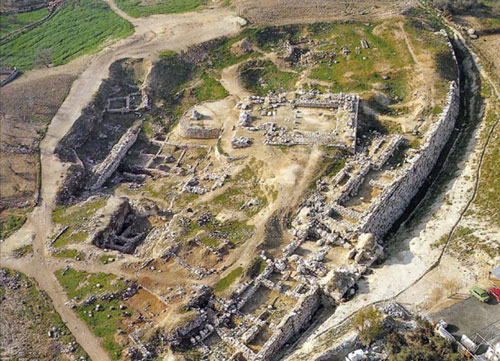Missing the obvious
www.biblicalarchaeology.org; a website that presents itself as “A Christian Apologetics Ministry Dedicated to Demonstrating the Historical Reliability of the Bible Through Archaeological and Biblical Research”.
The article in itself is well researched, and I command Hansen for providing quality information on Shechem (modern day Nablus). Shechem remains a critical site that can help us better understand the context in which Yahweh made a Covenant with Abraham.
Reading the article, I got the feeling Hansen had collected all the pieces of the puzzle but had somehow failed to see the obvious.
Indeed, how can someone read this article (let alone write it) without coming to the obvious realization that the worships of Baal Berith and Yahweh have quite a lot in common? The article offers a wealth of information on the worship of these two deities.
Shechem as the site of Baal Berith worship:
- Shechem is the site of the temple of Baal Berith (i.e. “Lord of Covenant”)
- The site was established somewhere during the 18th century BCE
- Tel Balata (notice the “Ba’alat” resonnance) is the Tel (i.e. mount) where the temple of Baal Berith is located
- The foundation of the temple of Baal Berith can be dated to 17th century BCE
- Mount Ebal (notice the “Ba’al” resonnance) is one of the two mountains (Gerizim is the other) that is surrounding Shechem
- Shechem is the site where Abimelech (c. 12th century BCE) burned a thousand Israelites that had found refuge in the temple of Baal Berith
- Idolatry and sacrifices were common at Shechem
- The Samaritans living at Shechem practiced ancient pagan cult, but accepted Yahweh
Shechem as the site of Yahweh’s worship:
- Shechem is the site where Abraham (18th century BCE) made a Covenant with Yahweh (before the temple of Baal Berith was established)
- Jacob hides his idols under a tree at Shechem
- Shechem is the site where Joshua (c. 13th century BCE), standing next to the Ark of the Covenant, reads the words of the Law (long after the temple of Baal Berith was established). This renewal ceremony was meant at recognizing the promises made to Abraham.
- Shechemites (pagan) and Israelites co-existed without problems
- Shechem was a city of the Levitical priesthood
- Shechem is the place of the burial of the Patriarch Joseph
- Shechem is where one can find Jacob’s well
We therefore learn from this article that Abraham made a covenant with Yahweh precisely where Baal Berith (“Lord of Covenant”) would soon be worshipped… We also learn that the site of prominent Baal Berith worship activity becomes a central place of priesthood and worship for Yahweh…
Don’t you get that odd feeling that Yahweh and Baal Berith could actually be one and the same deity?
Biblical history makes a lot more sense when “faith” is removed from it.

Excellent! Clear and informative. One added point: The possibility or likelihood that Yahweh = Baal can never be an either-or consideration because all such entities are entirely speculative, which means there is no hard evidence that either ever existed, much less whether they are distinct or the same.